Stay in the know on all smart updates of your favorite topics.
Floating Urban Development Challenge; Co-creating imaginable, workable and attractive scenarios

Due to lack of space and climate change, the future of living might need to partly move on to water areas. In our history of conquering the water, the Dutch have a head start in some of the challenges associated with living on- and with water. Researchers and designers are therefore imagining and conceptualizing floating urban development. However, to make it a truly realistic and imaginable future scenario, there are more hurdles to overcome. To realize floating neighborhoods, we’ll need to find solutions for more than only the technical aspects, like; financing, community support, ecological aspects, affordability, politics, etc.
Overcoming these barriers will be difficult. We’re currently focusing on urgent (housing)crises and our collective belief on urban development is mainly focused on ‘family apartments on land’. This challenge revolves around creating imaginable and workable scenarios of urban development on water.
Cooperative challenge: How can we help to mainstream energy cooperatives and ensure that structures in society make room for them and barriers are resolved?
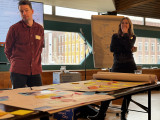
In the past decade, we have witnessed a surge of cooperatives across society. From community-led energy projects to endeavours in collective mobility and housing, citizens and companies are increasingly organizing themselves to shape their surroundings, often driven by sustainability and social goals and most of them do this in a not for profit way. Despite this rich history and the ongoing proliferation of initiatives, cooperative efforts and their benefits often remain small-scale and localized and, in most cases, accessible only to specific and select demographics.
This challenge aims to help civil society organizations in the energy domain, such as energy cooperatives, to become more mainstream. We aim to create recognition, to create an understanding of mutual interests with the key stakeholders they have to work with, and to exchange knowledge for these organizations to grow faster or repeat.
GEMINI: Greening European Mobility through cascading innovation INItiatives
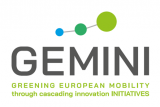
Context
At the heart of the GEMINI Project lies a commitment to fostering innovation and to accelerate the transition towards climate neutrality in mobility solutions.
Goal 11 of the UN Sustainable Development Goals advocates for access to safe, affordable, and sustainable transport systems. Nowadays, transport plays a significant role on air pollution and is one of the major sources of greenhouse gas emissions and is the only sector in the EU with increased Green House Gas (GHG) emissions compared to 1990.
The promotion of sustainable and innovative mobility solutions can help towards reducing GHG and carbon footprints, improving air quality, and achieving climate goals.
Project brief
The GEMINI Project (2023-2026 “Greening European Mobility through cascading innovation Initiatives” is a Horizon Europe funded project with 43 partners led by the Urban Electric Mobility Initiative (UEMI).
To accelerate the transition towards climate neutrality, GEMINI aims to foster widespread adoption of sustainable shared mobility solutions. To achieve this, the project will develop and test innovative business models for New Mobility Services (NMS) such as shared connected automated vehicles and shared mobility public transport through public-private partnerships. The NMS business models will be demonstrated in ten European Cities (Amsterdam, Copenhagen, Helsinki, Munich, Leuven, Ljubljana, Paris-Saclay, Porto and Turin).
Additionally, GEMINI will create digital tools and platforms that accommodate various mobility services, promoting collaboration and integration within the mobility sector. The project will actively engage stakeholders in the co-creation process, introducing Mobility as a Commons (MaaC) and incentivizing behavioural shifts and user acceptance of these new mobility options.
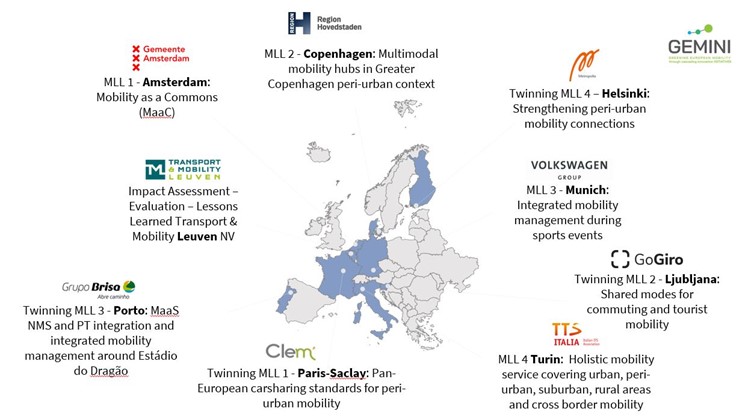
Furthermore, GEMINI will formulate policy recommendations to enable the scaling up and replication of successful mobility solutions. By aligning with Sustainable Urban Mobility Plans (SUMPs) and urban mobility planning frameworks, the project aims to contribute to a comprehensive policy package that guides and incentivizes future mobility innovations. The GEMINI project envisions fostering sustainable, accessible, and affordable shared mobility solutions that contribute to a safer and more environmentally friendly urban mobility landscape.
Objectives
- Develop and test sustainable business models for New Mobility Services (NMS) to increase shared mobility solutions (MaaS and MaaC) for various user groups, including enterprises, families, and tourists.
- Create digital enablers, including collaboration platforms and multimodal MaaS solutions, to integrate and facilitate a wide range of mobility services.
- Actively involve stakeholders in the co-creation of new mobility options and integrate Social Innovation practices to incentivize behavioural changes and user acceptance.
- Formulate policy recommendations to support the scaling up and replicability of successful mobility solutions, contributing to the development and implementation of SUMPs and urban mobility planning frameworks.
Cenex NL key contributions
The team plays a vital role in developing policy recommendations and technology roadmaps to accelerate the deployment of innovative mobility services. Through collaboration with local authorities in twinning cities, these roadmaps will align with the fast-track deployment of shared mobility trends in the short and medium term. Additionally, Cenex NL will contribute to the development of the Handbook consolidating the project’s learnings and offering practical guidance to cities and citizens across Europe.
This project has received funding from the European Union’s Horizon Europe research and innovation programme under grant agreement No 101103801.
Professionals in romanian local public administration. Smart city managers
City Managers Association in Romania (AAPRO) was founded in 2010, as a follow-up of a pilot project called “Public Administrator – a success factor for an efficient management at local level” carry out by the Central Unit for the Public Administration Reform (a structure within the Romanian Ministry of Administration and Interior Affairs).
AAPRO is commited to form a national, relevant, elite and professional Body of City Managers, who must have a clear image on the background of this career and become responsible for their professional conduct and self-improvement.
The initiative to introduce the City manager position at each local level in Romania targets an higher lever of professionalism at counties, municipalities, cities and communes staff.
The romanian equivalent of the city manager can be hired upon the Mayor’s proposal or the one of the local council (wich must give the final aproval anyway), after a transparent selection process. His main responsibilities are to coordinate some of the public administration affairs and services (on an agreed agenda) and to do other specific tasks delegated by the Mayor / President of County Council, all of these concluded in a management contract, based on clear management objectives and performance criteria.
The City Manager is one common thing among the efficient and successful local governments
all over the world. Adopting him in the romanian administration was a step from public adminsitration to public management, focusing on delivery good qaulity services for the citizens. The Public Administrator, as we call it here, is not another birocrat, but a strategist, a visonary, balancing day-to-day (organizational) problem solving with planning and shaping the future, acording to the adopted local strategy and the community aspirations.
At the local level, the elected body and the technical staff, coordinated by the Mayor or the President of County Council and the Public Administrator, must first find aut and understand what people want, need and hope, then come up with a strategy, an action plan, seek for solutions, means and resources, involve the local actors such as bussines community and civil society, and communicate at any moment what has been done so far, and what is is comming.
In this picture, the City manager has a leading role, he is an communicator, technology facilitator, and can be, if the Mayor delegates him, even budget chief authorizing officer. Currently, in Romania activate more than 700 Public Administrators (the number varies from month to monyh), as follows :
- Out of 41 counties, 34 ocupied positions and 7 vacancies
- Out of 103 municipies, 56 ocupied positions and 37 vacancies
- Out of 216 cities, 60 ocupied positions and 65 vacancies
- Out of 2850 communes, 550 ocupied positions and 350 vacancies
Those above figures makes 459 vacancies in total, with the observation that, in many cases, we are talking about small comunes with scarce Romanian City Managers Association (AAPRO) conducted a survey among its members that identified the needs for training, building local capacities on climate protection, urban regeneration, structural changes and energy policies, concept of smart city and creatively intelligent communities.
Establishing appropriate training structures for the now and future City Managers is essential for supporting the development of the cities and climate strategies (it aims to encourage cities and municipalities to take concrete actions for climate protection in Romania), urban regeneration and structural changes, concept of smart city and creatively intelligent communities.
This project focuses on the competences that the city managers must have in order to achieve a multiplication effect through their contribution. The nationwide implementation of a systematic local energy management using the City Managers can thus make an important step to tapp existing saving potentials in different regions and to establish a sustainable portfolio management.
We hope that, with your support, that the outcomes of this important project, can be forwarded on an extended scale to the local institutions (schools, hospitals, etc) and communities, as good practices, improving the energy efficiency status and reducing the energy poverty, urban regeneration and structural changes, concept of smart city and creatively intelligent communities.
The pilot group will be composed of 50 to 80 city managers upon their self enrollment and applying few clear selection parameters : level of municipality, experience, english language, etc. The target group will be afterward authorized to further train other city managers and employees of the local municipalities. This core team is expected to disseminate the information and to act as an experts group in our Association.
As Romania has (at this moment) a deficit of at least 250 city managers, the learning and workshops center will be powerful tool, a public management academy and a testing facility for the ones applying for this position.
Pientere Tuinen

Pientere Tuinen is een 3-jarig project dat begin april 2023 is gestart. Tot eind 2023 kunnen nieuwe deelnemers aansluiten bij het grootste participatieproject in Nederland. Pientere Tuinen is een samenwerking van 7 publieke en private partijen.
De aanpak in Pientere Tuinen draait om drie samenhangende onderdelen.
1. Data verzamelen met een slimme sensor en een interactief/educatief dashboard van de eigen tuin voor de individuele inwoner,
2. Kwantitatief (data-analyse) en kwalitatief (interviews/surveys) onderzoek naar strategieën voor een gezonde leefomgeving en duurzame gedragsverandering,
3. Advies op maat aan bewoners over de inrichting en het beheer van de tuin
Het doel van Pientere Tuinen is een groenere, gezondere leefomgeving te creëren door het bewustzijn en de motivatie bij tuinbezitters te vergroten. Dat doen we door data te verzamelen, onderzoek uit te voeren en meer maatwerk te bieden in de advisering en voorlichting aan bewoners.
Enkele voordelen van uw deelname aan Pientere Tuinen op een rijtje
- Tuinbezitters krijgen een bodemsensor die drie jaar lang hitte, bodemkwaliteit en het vochtgehalte meet, waarvan resultaten zichtbaar zijn op een dashboard
- Tuinbezitters krijgen (mede op basis van de data) specifieke voorlichting voor het vergroenen van de tuin door middel van tuintips, stappenplan en mogelijke (wijk)workshops
- Deelnemende organisaties zijn onderdeel van het grootste participatieproject van Nederland met ca. 5.000 deelnemers en meetpunten door heel Nederland
- Deelnemende organisaties worden betrokken bij twee langdurige, landelijke onderzoeksprogramma’s naar motivatie voor vergroening en gedragseffecten van verschillende interventiestrategieën, en data-analyses van milieu- en gezondheidsaspecten
- Als organisatie bent je zelf als partner zichtbaar in een landelijke PR- en communicatiecampagne rondom het project.
- Je leert zelf binnen de community over structurele, duurzame vergroening met uw inwoners onder andere van de onderzoeksprogramma’s en andere projectpartners
Open Call: Create impact with the European CommuniCity project!

Does your organisation work with vulnerable target groups in Amsterdam, or are you a tech company with great ideas for digital solutions for this group? Create tech applications together for the challenges of vulnerable communities during the European CommuniCity project.
From 28 February to 31 March, you can submit your proposal for one of the challenges to CommuniCity for a chance to win a €12,500 grant to test your idea in practice.
How does it work?
- Companies or organisations submit their proposal via the CommuniCity website;
- The submissions are assessed against the set criteria and thus the winners are selected;
- The winning entries receive a grant of 12,500 euros to develop and test their solution together with the target group in Amsterdam.
For more information about the project, the challenges for Amsterdam and application conditions check the website below!
Responsible digitalisation challenge: How to make digital systems more human-centric?

Technological and innovative developments are moving faster than ever before. As a government, you want and need to keep up with these developments. At the same time, the use of digitalisation and data often leads to undesired results, increasing the distance between citizens/entrepreneurs and the government.
The municipality of Haarlemmermeer is shifting her focus from 'the system is central, people have to become more digitally savvy to 'people are central, our systems have to become human-centric’. The underlying question is: how do you really put people at the centre of digitalisation and the design of digital systems?
Do you want to know more or contribute to this challenge? Contact me via sophie@amsterdamsmartcity.com or let me know via the comments below.
Project’s current phase
Jeroen Brink and Christine Groothuis from the municipality of Haarlemmermeer introduced this challenge to the Amsterdam Smart City network on the 7th of November, 2022. During a co-creation session, we discussed that there are two main elements of this complex challenge that we would like to focus on. On the one hand, we’re talking about a radical and fundamental shift. A different way of thinking within governmental institutions. This shift requires a more philosophical and substantive conversation about how we would like our digital public space and systems to look like. But on the other hand, we want to think big but also start small. Therefore, the municipality of Haarlemmermeer would like to embrace a real-life case to bring human-centred digital systems to life.
On the 1st of December, we organised a follow-up session with Amsterdam Smart City partners. During this session, Max Kortlander (Waag) presented the Public Stack. This project puts the public value at the centre to create open, democratic and sustainable digital public spaces. Following this introduction, we did a futures-thinking exercise led by Sacha van Tongeren (Kennisland), to think about how we want the digital public space to look like in the future. And additionally, we used empathy maps to synthesize our collective knowledge about our audience, which brought us closer to a common understanding of who they are.
Responsible smart doorbells

Photo: Daan Rozinga, The Incredible Machine
The Responsible Sensing Lab is currently working on a few projects regarding smart doorbells.
Smart doorbells are like a security camera's, but available for everyone. Always on, and owned by private parties, the smart doorbell is destined to have an impact on our privacy. As of now, there could be thousands of smart doorbells in Amsterdam, filming public space. We don t have a clear view on the numbers, and we do not know what the owners do with the collected data. Smart doorbell owners are often not aware of the privacy issues.
One of the Responsible Sensing Lab's projects is Shutterring. The Shutterring project aims to make smart doorbells more responsible by ensuring the privacy of bypassers and owners while keeping the main functionality of the device intact. Shutterring is a design by The Incredible Machine.
Inspired by Shutterring, the Lab has started another project regarding responsible smart doorbells: Challenging the design of smart doorbells. In order to challenge the current design of smart doorbells (IoT doorbells with integrated cameras) a few alternative smart doorbells have been created through speculative design. The goal of this project is to kickstart a conversation about how to deal with the presence of smart doorbells in the city of Amsterdam. How could smart doorbells be designed in a way that they align better with the values of the city and its population?
The Responsible Sensing Lab team will present both their smart doorbell projects during the demo day on 11 October. Stay tuned!
How can parametric analysis optimise urban design of Schinkelkwartier - the best masterplan in the Netherlands in 2021

On Thursday, March 17 Grisha Zotov pitched some of the dilemmas his team encountered during the process of urban design. Among others, he touched upon densification and building height as aspects that influence intensity of human interaction.
Located in the former industrial zone, Schinkelkwartier is an example of inclusive and interdisciplinary redevelopment. Destined to be a diverse mix-use hub, Schinkelkwartier will develop in several phases during 25 years. At an early stage local stakeholders and neighbors of the area were involved.
On behalf of Architectural Prescription Grisha raised questions about opportunities and risks offered by water-related location and complexity due to the amount of interested parties.
Suggestions, ideas and feedback are always welcome.
Local or guest, reach out and share what you think!
Building a shared vision of the city - with LEGO!
Building the largest interactive LEGO model of the future city ever!
Imagine a model of the city; however, instead of a literal representation, this is a sculpture that holds ideas and dreams from citizens, policymakers, entrepreneurs and visitors about what the city might be like after we solve major transitional challenges (e.g. sustainability, energy, equality, smart).
What would it feel like to be in this city? What do people wish this future city to become?
the goal
A model of the city that contains the ideas that a diverse group of people have about how the city might emerge from major transitional change like climate adaptation, sustainability, equality, smart. Imagine the city from what might be and what opportunity change offers.
the form
A room-sized model built with LEGO in a public space and with interactivity (e.g. app / QR link / AR) to share the stories that this model contains.
the process
Lego is an powerful way to evoke and capture stories about how people think about something. Through a series of workshops, people from all parts of the city will be invited to share how they think about the future of the city and capture their stories in a collective model. An interactive installation opens up those stories to passers-by and other participants.
partners
finance, organisational, tech
call to action
Get in touch if you want to contribute to the realisation of the largest LEGO city vision model ever!
Intelligent Transportation System – Best Option for Smart Cities

Growing population, aging infrastructure, lack of mobility-related resources, and inefficient transport networks are leading to higher traffic congestion, road safety, and supply of mobility services in urban areas. It has become important for cities to look for smart mobility solutions to tackle these problems. Intelligent Transportation System is one such innovative concept that enables reliable and more personalized travel experience to move around in cities. Let’s have a look at the concept in detail.
What is an Intelligent Transportation System?
Intelligent Transportation System (ITS) strives to innovate, plan, operate, evaluate, and manage transportation systems by leveraging advanced information and communication technologies. ITS refers to the use of technology to collect and analyze information related to the sector to deliver integrated transportation solutions.
It focuses on various modes of transportation, infrastructure, vehicles, traffic management, stakeholders, and smart mobility. From a holistic point of view, it rectifies errors related to transportation, infrastructure and enables systematic management of the entire transport system by leveraging a wide range of technology. It is one of the important components of many innovative transportation solutions like Mobility as a Service, Connected, and automated mobility.
Moreover, effective use of infrastructure, capacity, technology in ITS requires a lot of planning well in advance by ITS specialists. That can be implemented by collaboration or public-private partnerships. Because there are so many things that need to be taken into consideration while implementing ITS, e.g., transport modes, design, routing, vehicles, technology type, and traffic flows, to make transportation safe and well-coordinated.
What is the need For ITS?
Transport authorities continue to raise the bar for safe and hassle-free transportation for commuters, but there are other challenges that commuters face related to urban congestion, inadequate road infrastructure, aging infrastructure, road safety, inefficient public transportation, and higher energy consumption. ITS can play an important role in solving these problems and better manage and control the transportation systems in real-time.
ITS facilitates new opportunities and more transportation choices integrated with easy-to-use technology. It is a multi-disciplinary concept that presents much-needed and cost-effective transportation solutions for smart cities. ITS can:
- Use resources and infrastructure effectively (existing as well as new)
- Plan, design, and implement comprehensive transportation systems
- Offers multi-modal, adequate, and on-demand transportation options
- Enhance public transportation management and its attractiveness
- Combat urban congestion
- Improve road safety and security
- Reduce fuel and energy consumption levels
- Control and manage traffic in the cities
- Make transport safe, efficient, manageable, and sustainable
Van Afval naar Oogst

We gooien in Amsterdam nog steeds ons gft-afval bij het huishoudelijke afval. Zonde vinden wij! Van dit gft-afval kan namelijk goede compost gemaakt worden. Daarom zijn we in mei 2020 samen met Stichting Onschatbare Waarde van start gegaan met het project Van Afval naar Oogst.
De centrale locatie van het project is in de buurttuin van I Can Change The World With My Two Hands, een initiatief van Onschatbare Waarde, in Amsterdam West. Onze gezamenlijke ambitie was 100 Amsterdammers te betrekken bij afvalscheiding en hergebruik. Meer dan 100 mensen hebben zich aangemeld en leveren nu wekelijks hun gf-afval in bij de buurttuin waar waardevolle compost van wordt gemaakt.
De Gezonde Stad werkt aan een groene, circulaire en inclusieve stad, niet door er lang over te praten, maar door te doen, samen met een community van bewoners, bedrijven, overheden en andere organisaties. We planten bomen, leggen buurtparken en moestuinen aan, we organiseren events om lokaal voedsel op de kaart te zetten, we zijn trekker van het platform Van Amsterdamse Bodem en we sluiten kringlopen, zodat afval weer tot iets waardevols kan worden omgezet.
Volg ons op social media of check degezondestad.org om op de hoogte te blijven.
Shuttercams for a responsible smart city

Shuttercam is a project by Responsible Sensing Lab (RSL), a collaboration between the City of Amsterdam and AMS Institute. In essence, RSL is a testbed for conducting research and experiments on how smart sensing technologies in public space – like cameras – can be designed in a way that makes the digital city 'responsible’.
At the Lab we invite academics and practitioners responsible for digital systems in the city to explore how to integrate social values such as autonomy, privacy and transparency in the design of these sensing systems in public space.
How to know when a camera ‘sees’ you?
The Shuttercam project originated based on the notion that citizens currently can not directly know or see if and when cameras in public space are monitoring you or not. The project also questions the necessity for many non-security related cameras in the city to be switched on indefinitely.
Experimenting with 3 prototypes at Marineterrein
The Shuttercam project will test 3 prototypes. These are installed at Marineterrein Amsterdam Living Lab (MALL) in the upcoming weeks.
First and foremost, the cameras within this project are all part of the crowd monitoring system by the City of Amsterdam, which is a privacy friendly system. So what do these cameras record or see for example?
A crowd monitoring system works with a camera that has an algorithm read out and analyzes video images. In addition to measuring crowds and displaying those crowds in usable numbers, the algorithm can also determine whether people keep a distance of 1.5 meters. All this is done in an anonymous manner that naturally complies with all privacy legislation.
The video images are not watched by a human but are processed automatically. Only a few frames are saved with unrecognizable, blurred people's faces. Those frames help to "train" the algorithm. Furthermore, the images are not saved. Continue reading about the the Shuttercam project >>
Interactive Sound Garden @ Marineterrein
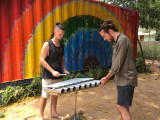
Hello smart city lovers! What do you think of this proposal for a Sound Garden @ Marineterrein?
We are proposing a welcome and open place of musical exploration and reflection for all Amsterdammers and visitors to Marineterrein.
It invites you to stay and play, to enjoy the wonder of sounds, and to discover music inside yourself.
Observatory of ideas

Solidary, Creative Economy, for Communities and With Communities!
Thousands of other initiatives around the world!
(Ana Luíza Farage Silva)
At some point people realized that they needed each other to do something other than "subsist". From there, they decided to organize themselves in something called communities in order to improve their lives and practice a good "survival". Over time, they realized that the law of the strongest could hurt and decided to affirm social contracts to live together and in harmony.
Some people understood that they should give up some freedoms for this, others did not. Over time, these communities have been forming their stories, generating their identities and dynamizing their cultures. When communities became organized, they started to be called societies.
How many societies do we know? How many societies do we live in? Within these social contracts, many have little and few have a lot. Much what? Wealth? Yes, few have access! Access to quality education, decent health, respectful housing, nutritious food and so on.
How many can do what they want and how many cannot do what they need? It is in this concern that I perceive (as several others have already noted) that everything tends to come together. The better structured places attract bigger investments that generate bigger chains that attract even more investments and keep developing (or just growing) more and more. The point is that where there is little, little remains.
Does it have to be this way? If you were a government official and were going to choose to develop a state, would you give growth incentives to regions that are already more advanced or encourage the development of those that still have almost nothing? The prudent answer may be: "it depends" ... if you just want to develop faster, it may be easier to encourage the growth of the wealthiest regions.
After all, their chain is greater and they can “pull” other cities in the process of growth. But if you think about it on the other hand, you can see that there is no certainty that the poorest cities will be fostered by the richest. Will the access ever get there? With this in mind, several concepts and practices have been developed. Have you ever heard of Creative Economy? Basically, knowledge, creativity and intellectual capital are the production factors of this economy.
In this process, cultural production is used as a historical factor in the formation of identity and income generation in that community. In other words, a new look at the solution of the structural problems of society, the economy and culture are sought from the identity of that population.
In other words, development is sought from the convergence and respect for the roots of that people's history with cultural, social and economic objectives. Discussions, initiatives and studies have been taking place throughout Brazil with the aim of expanding this concept: the first International Forum of Creative Cities in Rio Quente took place in September 2013 http://rioquente.go.gov.br/cidades-criativas/, the IV Minas Gerais Meeting of Public Administration, Solidarity Economy and Social Management (IV EMAPEGS) addressed this theme in Viçosa this year http://www.emapegs.ufv.br/ and so on.
In addition, another concept has been addressed, created and practiced. Have you heard of Solidarity Economy? The concept of solidarity started to be guided at the end of the 18th century, but it has not yet been completely assimilated to the market. In this context, solidarity economy means interdependence and is based on the principles of cooperation, self-management and brings an economic dimension to society. In other words, we think of a market geared towards people, not people geared towards the market.
Despite the various difficulties faced by the Solidarity Economy, such as mapping, production flow, obtaining credit, advice and collective work, many advances and initiatives have taken place in Brazil. Have you heard of the Center for Solidarity Economy of Tocantis? UFT's NESOL? They have been working hard on this process: http://www.fapto.uft.edu.br/conhecimento/index.php/uft/14-nucleo-de-economia-solidaria-da-uft-nesol. Many communities have also realized that they live on the job, but remain in poverty. So they decided to challenge all the pre-established and create social currencies. That is, they realized that they had to develop some way to encourage the money to circulate more within the community itself, with the possibility of exchanging it for the real. Some initiatives have been implemented in Brazil. The first was Banco Palmas, at the Palmeiras complex in Fortaleza (CE). http://www.bancopalmas.org.br/oktiva.net/1235/nota/12291. Today there are more than 110 community banks, a chain, across Brazil. Several other initiatives in the world have been taken, but it is clear that challenges abound.
The 100 Intelligent Cities Challenge

The 100 Intelligent Cities Challenge (ICC) is a European Commission initiative that supports 136 cities in using cutting-edge technologies to lead the intelligent, green and socially responsible recovery. The ICC cities and their local ecosystems will be engines for the recovery of their local economy, create new jobs, and strengthen citizen participation and wellbeing.
The ICC is part of a wider EU support system that recognises the importance of delivering on the promises made by the European Green Deal, the digital strategy, and other EU policies. It looks to move towards a more digital, service-oriented and low-carbon economy, supported by a knowledge-based society, that enables circular economy systems through ‘local value loops’, evidence-based reskilling, and sustainable investments.
Participating cities receive one-to-one strategic advice from international experts on fine thematic strands: green economy and local green deals, improving the citizen participation and the digitalisation of public administration, green and digital transition in tourism, resilience of local supply chains, up- and reskilling of the workforce. ICC Cities are also supported by transversal services on access to data, access to finance and through a marketplace full of innovative solutions.
The Amsterdam Region, represented by Amsterdam Economic Board and Amsterdam Smart City (ASC) is one of the ICC mentor regions, alongside European mentor cities Aarhus, Antwerp, Barcelona, Espoo, Hamburg, Nice, Porto, Rijeka and international mentors Medellin, Singapore and Toronto. By participating in the ICC, the Amsterdam Region will share its experience and learn from other best practices related to multi-stakeholder collaboration, innovation ecosystems, circular economy and citizen participation.
ICC Updates:
• Launch of 100 Intelligent Cities Challenge
• ICC Challenge Mayors’ Summit
• Launch of ICC Renovation Action Group
• Public Kick-off 2nd ICC City Lab
• ICC - 3rd City Lab
• 200 Intelligent & Climate Neutral Cities Jam
• ICC - 4th City Lab
• Invitation to co-create European transition pathways for more resilient, greener and digital industrial ecosystems
• ICC - 5th City Lab
• Developing circular and sharing economy practices in cities
• The 100 Intelligent Cities Challenge: Looking Back & Looking Forward (End of Phase 1)
52 weken duurzaam, we gaan het gewoon doen.
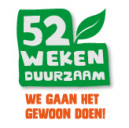
52wekenduurzaam nodigt je uit om je eigen leven stap voor stap duurzamer te maken. Een jaar lang iedere week een kleine verrassende en duurzame stap. Om te zien of het bij je past. Word je er gelukkig van, dan hou je het vol. Zo niet, dan skip je het. Wij onderzoeken wat er wel kan. Uitdagend, leuk, leerzaam en gratis. Loop je een stukje met ons mee?
Wij denken dat we met elkaar op een gemakkelijke manier veel duurzamer kunnen worden. Door elkaar te inspireren en uit te dagen. Door leuke en verrassende dingen te onderzoeken. Om zo je eigen versie van een duurzame leefstijl te ontwikkelen. We streven naar 5000 deelnemers in 2021. Hoe meer mensen meedoen, hoe beter. Voor onze Totale Impact Score, maar ook voor jezelf, want samen is veel leuker dan alleen. Dus geweldig als je nu al je gezin, je buren, vrienden en collega’s inspireert om ook mee te doen.
Wicked Problems
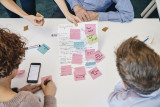
Te wicked? Niet voor ons.
Wij werken allemaal aan urgente, complexe, maatschappelijke uitdagingen. Issues die schier onoplosbaar lijken, van dilemma’s en paradoxen omgeven, nog niet duidelijk hoe het moet. Wel is duidelijk dát het moet, dat we elkaar nodig
hebben en dat we er NU aan moeten beginnen. Om met de woorden van Jan Rotmans te spreken; we leven niet in een tijdperk van verandering maar in een verandering van tijdperk. En hier hoort een nieuwe gereedschapskist bij.
En of je nou aan energietransitie werkt, andere mobiliteitssystemen, creëren van waterstofhubs, peer to peer autodeelsystemen, het maakt niet uit, we zien dat al deze opgaven op enig moment tegen gelijksoortige barrières aanlopen. Op samenwerking, financiering, privacy, onvoldoende aansluiting op de maatschappij, om maar een paar voorbeelden te noemen.
Unieke samenwerking
Als Amsterdam Smart City netwerk willen en kunnen we deze opgaven niet laten liggen. Door het bundelen van onze kennis en expertise kunnen we als netwerk iets unieks bieden en de wil en durf tonen om deze barrières te doorbreken. De betrokken partners die dit uitdenken en begeleiden zijn RHDHV, Kennisland, Drift, NEMO, Arcadis, Alliander, HvA en Metabolic. Zij bundelen hun expertise en ervaring om de echte vragen boven tafel te krijgen, tot nieuwe manieren van samenwerken te komen en barrières te doorbreken. We richten ons met name op de start van de samenwerking. Gezamenlijk ontwikkelen we een ‘wicked problem aanpak’. Op een nieuwe manier, lerend door te doen, exploratief.
Waar moet je aan denken?
Wat is eigenlijk het echte probleem? Wiens probleem is dit? Hoe kijken anderen er tegenaan? Welke andere partijen lijken nodig? Hoe vind je ze? Hoe ga je om met eigenaarschap en botsende frames? Hoe zorg je dat je al in
een vroeg stadium de maatschappij (bewoners, ondernemers, werknemers, etc) betrekt en hun ervaringen in het project trekt? Het wicked problem team zet nieuwe methoden in voor het beantwoorden van deze vragen. En het creëren van de benodigde commitment om het vraagstuk aan te pakken. Niets staat van te voren vast, want we passen ons aan aan wat we tegenkomen. Met elkaar ontwikkelen we een nieuwe aanpak om de barrières te doorbreken.
Isolde de Ridder Sieraden

At Isolde de Ridder Sieraden, founded by Isolde de Ridder – Le Creurer in 2017, creating high-end jewellery with the greatest of care for both people and planet, is our mission. We strive to make the world more beautiful with our unique jewellery. Our unique pieces are crafted by hand in the Netherlands. Jewellery that give discarded metals and other materials a second life and that contribute to a better world for generations to come.
3-CYCLE
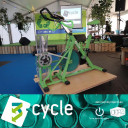
We are 3-CYCLE, a new upcycling project by Erik Fakkeldij (The Botfactory) and Joost Bosker (Oerz). We joint forces in 2019 to create new products from used pieces of plastics and metal. And... to make this a true dutch innovation, we use a setup with a bike to do the first steps of the upcycling process!
But that's not all... we do this by giving workshops and presentations to kids and the public to create more awareness. Our aim is to show that waste is not only bad for the environment, but it also means missed opportunities for reusing the waste and upcycling it into new products.
We believe this type of education is key for engaging the public, while making a
difference at the same time.
Stay up to date
Get notified about new updates, opportunities or events that match your interests.

